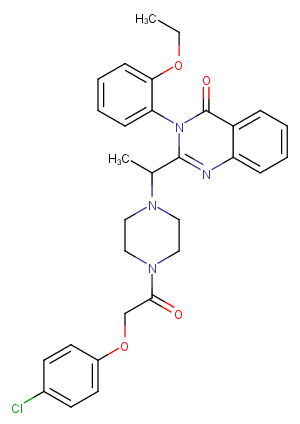Erastin
| Code | Size | Price |
|---|
| TAR-T1765-1mg | 1mg | £103.00 | |||||||||||||||||||||||||||||||||||||||||||||||||||||||||||||||||||||||||||||||||||||||||||||||||
| Special offer! Add £1 to your order to get a TargetMol CCK-8 Kit. Read more here. | |||||||||||||||||||||||||||||||||||||||||||||||||||||||||||||||||||||||||||||||||||||||||||||||||||
Quantity:
| TAR-T1765-5mg | 5mg | £148.00 | |||||||||||||||||||||||||||||||||||||||||||||||||||||||||||||||||||||||||||||||||||||||||||||||||
| Special offer! Add £1 to your order to get a TargetMol CCK-8 Kit. Read more here. | |||||||||||||||||||||||||||||||||||||||||||||||||||||||||||||||||||||||||||||||||||||||||||||||||||
Quantity:
| TAR-T1765-10mg | 10mg | £180.00 | |||||||||||||||||||||||||||||||||||||||||||||||||||||||||||||||||||||||||||||||||||||||||||||||||
| Special offer! Add £1 to your order to get a TargetMol CCK-8 Kit. Read more here. | |||||||||||||||||||||||||||||||||||||||||||||||||||||||||||||||||||||||||||||||||||||||||||||||||||
Quantity:
| TAR-T1765-25mg | 25mg | £254.00 | |||||||||||||||||||||||||||||||||||||||||||||||||||||||||||||||||||||||||||||||||||||||||||||||||
| Special offer! Add £1 to your order to get a TargetMol CCK-8 Kit. Read more here. | |||||||||||||||||||||||||||||||||||||||||||||||||||||||||||||||||||||||||||||||||||||||||||||||||||
Quantity:
| TAR-T1765-50mg | 50mg | £348.00 | |||||||||||||||||||||||||||||||||||||||||||||||||||||||||||||||||||||||||||||||||||||||||||||||||
| Special offer! Add £1 to your order to get a TargetMol CCK-8 Kit. Read more here. | |||||||||||||||||||||||||||||||||||||||||||||||||||||||||||||||||||||||||||||||||||||||||||||||||||
Quantity:
Prices exclude any Taxes / VAT
Overview
Regulatory Status: RUO
Shipping:
cool pack
Storage:
-20℃
Images
Documents
Further Information
Bioactivity:
Erastin is a ferroptosis activator acting on mitochondrial VDAC. It induces ferroptotic cell death in vitro.
Biological Applications:
RSL3 and Erastin, as activators of ferroptosis, can induce cellular ferroptosis. Ferroptosis can be employed to eliminate problematic cell types, such as cancer cells, inflammatory cells, or activated fibroblasts. Abundant research indicates that ferroptosis plays a crucial role in various conditions such as tumor suppression, immunity, neurodegenerative diseases, tissue and organ damage, inflammatory and infectious diseases. Scientists widely believe that targeting ferroptosis holds the potential to advance the development and clinical translation of therapies based on ferroptosis.
CAS:
571203-78-6
Description:
Erastin is a ferroptosis activator acting on mitochondrial VDAC. It induces ferroptotic cell death in vitro. The product is unstable in solution and is recommended to be dispensed now.
Formula:
C30H31ClN4O4
Mechanism of Action:
Ferroptosis is a type of programmed cell death different from apoptosis and necrotic cell death. Actually, ferroptosis is characterized by the depletion of glutathione (GSH), a reduction in the activity of glutathione peroxidase 4 (GPX4), and the iron-dependent accumulation of reactive oxygen species (ROS) and lipid ROS.
Ferroptosis can be triggered by various small molecules, including RSL3 and Erastin, which directly inhibit the cystine/glutamate reverse transporter protein (System Xc-) on the cell surface and GPX4. The cystine/glutamate reverse transporter protein is a heterodimer on the cell membrane responsible for the intracellular and extracellular transport of cystine and glutamate. It facilitates a 1:1 exchange of cystine and glutamate in and out of the cell. Absorbed cystine is reduced to cysteine within the cell, and cysteine, along with glutamate, is utilized in the biosynthesis of reduced glutathione (GSH). GSH, under the action of GPX4, reduces lipid hydroperoxides to lipid alcohols, thereby reducing ROS. Inhibiting the activity of System Xc- can affect GSH synthesis, leading to reduced GPX4 activity, diminished cellular antioxidant capacity, accumulation of lipid ROS, and ultimately resulting in oxidative damage and ferroptosis.
Molecular Weight:
547.05
Pathway:
Membrane transporter/Ion channel; Apoptosis; Cell Cycle/Checkpoint
Purity:
0.9975
Research Area:
Tumour suppression and immunity; Neurodegenerative diseases; Tissue and organ damage; Inflammatory and infectious diseases
SMILES:
CCOc1ccccc1-n1c(nc2ccccc2c1=O)C(C)N1CCN(CC1)C(=O)COc1ccc(Cl)cc1
Target:
Ferroptosis; VDAC
References
1. Dixon SJ, et al. Ferroptosis: an iron-dependent form of nonapoptotic cell death. Cell. 2012 May 25;149(5):1060-72.
2. Yagoda N, et al. RAS-RAF-MEK-dependent oxidative cell death involving voltage-dependent anion channels. Nature. 2007 Jun 14;447(7146):864-8.
3. Huo H, et al. Erastin Disrupts Mitochondrial Permeability Transition Pore (mPTP) and Induces Apoptotic Death of Colorectal Cancer Cells. PLoS One. 2016 May 12;11(5):e0154605.
4. Wu Z, Geng Y, Lu X, et al. Chaperone-mediated autophagy is involved in the execution of ferroptosis[J]. Proceedings of the National Academy of Sciences. 2019 Feb 19;116(8):2996-3005.
5. Li H, Shi W, Li X, et al. Ferroptosis is Accompanied by? OH Generation and Cytoplasmic Viscosity Increase Revealed via Dual-Functional Fluorescence Probe[J]. Journal of the American Chemical Society. 2019.
6. Yan B, Ai Y, Sun Q, et al. Membrane Damage during Ferroptosis Is Caused by Oxidation of Phospholipids Catalyzed by the Oxidoreductases POR and CYB5R1[J]. Molecular Cell. 2020



